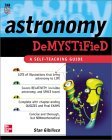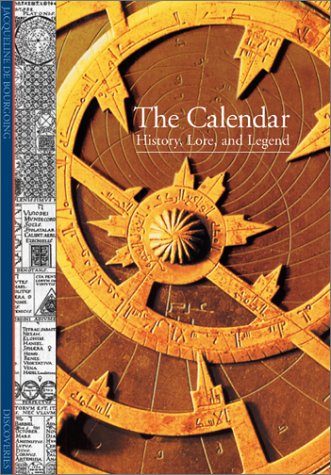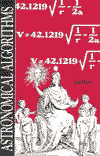
|
Blue Skidoos to the Planets!
Nickelodeon recommends this book of theirs for ages 3 and up.
The book contains 27 stickers of planets and other objects that children
can put in their appropriate places as a learning tool. The following
Note to Parents from Creators appears on the back cover:
"Blue and Steve skidoo to the planets and need help identifying them!
This book, like all Blue's Clues books, uses our cognitive-based
thinking skills and science curricula. It introduces children to the
planets and their places in the solar system. The Blue's Clues
mission is to empower, challenge, and build the self-esteem of preschoolers.
We hope this book helps you and your child realize these goals!"
List price is $5.99 U.S.
|
| |

|
Let's Look at the Planets
This is a "Poke & Look Learning Book". The publisher says
"Poke & Look Learning Books are filled with intriguing die-cut
holes to peek through, and lively text to make learning fun."
This cardboard book is cut out near the bottom with index tabs that
let a child put their finger on a picture tab and open up to that page.
The book has 14 pages (counting front and back covers). Parents can
read the text to a small child, or an older elementary school child can
read the text. The pages briefly describe the Universe, planets, the Sun,
pictures of the constellations, shooting stars, eclipses, telescopes,
the Moon, and rockets (spaceships). List price is $9.99 U.S.
|
| |

|
Reader's Digest Pathfinder Series: Space
This book is suitable for grades 4 to 7. It is 64 pages
long, and substantial text accompanies its color illustrations. This
paperback book is priced reasonably at $7.99 U.S.
|

|
Peterson's First Guide to Astronomy
This book is only one of many in the Peterson Field Guide series, and is
not the only one about astronomy. However, it is a great start into
the world of "stargazing." This book shows how you can view many objects
(such as constellations) without binoculars or a telescope. The list price
is only $5.95.
|

|
1001 Facts About Space
This book in D.K.'s Backpack Books series is loaded with color illustrations
and descriptive texts on...apparently 1001 facts! It is 192 pages long, and
has an index. It is suitable for high school age students and older.
List price is $8.95 U.S., and is a great buy.
|

|
Astronomy Demystified: A self-teaching guide
This is a brand new title from McGraw-Hill, ©2003. It is 575 pages
long, with a full index. It is available as a softbound book and as
a digital Adobe eBook. This book should be easy reading for high school
students and above. Unlike most astronomy texts, this book purposely
is not loaded with trigonometric equations or higher mathematics.
Descriptions of all phenomena are supported with black and white
illustrations. The description on the back cover states: "Want to master
astronomy or aerospace engineering but are intimidated by the complex
formulas and equations? Tried other self-teaching guides but were turned
off by the dry, complicated presentation? Problem solved!
Astronomy Demystified is a totally different, very entertaining,
and amazingly effective way to learn the mathematics, fundamentals,
and general concepts of astronomy." If you're looking for non-mathematical
explanations of astronomy, this book is unique in its coverage.
List price is $19.95 U.S.
|

|
The Calendar: History, lore, and legend
This is a book in the small but colorful Abrams Discovery series. It is 144
pages, with an index. You won't find formulas here, just light reading on
the history of time measurement. It is loaded with color illustrations, but
at the same time packed with historical descriptions. Color photos and
diagrams of historic calendars and related diagrams will make this
attractive to the scientist and the layman alike.
|

|
Stonehenge Decoded
This revolutionary book, now out of print, describes astronomer
Gerald S. Hawkins' careful measurements, theories, and computer trials and
tribulations that showed Stonehenge to be a far more complex astronomical
computer than anyone previously imagined. Hawkins found that Stonehenge was
not only aligned to show the sunrise at the summer solstice, but also had
arches positioned to show the north and south extremes of movements of the
Sun and Moon. He showed how the 56 positions around Stonehenge and the
black and white rocks with them were an ancient 56-year eclipse predictor.
This book is a remarkable
journal of a scientist's path to discovery. Although written by an
astronomer, it is not loaded with complex mathematical formulas that
would put off most readers. Most of it discusses historical events,
and Gerald Hawkins' path of discovery. If you are interested in Stonehenge
as an astonomical computer and can find a copy of this book, get it.
List price of the 1993 Barnes & Noble edition is only $6.98.
|

|
Sundials: History, theory and practice
This book by Rene R.J. Rohr is an excellent book for anyone interested in
the history and mathematics of sundials from ancient Egypt to modern times.
It contains complete instructions for creating a sundial for any latitude.
Knowledge of
trigonometry will be useful if you want to build your own sundials from
this book, but not necessary if you just want to enjoy the historical and
general discussions.
|

|
Practical Astronomy with Your Calculator
This is an oldie but a goodie. If you're interested in writing your own
ephemeris software, this is a good starting point. It contains both
low- and higher-precision calculations for most common astronomical
calculations, especially involving the Moon and Sun. You'll need an
understanding of trigonometry and simple matrix multiplication to get
through everything in this book. With that, you could easily program
the calculations in a computer program. The book is spiral-bound, so
it lies flat. It is 185 pages, with a comprehensive index. List price
is $22.00.
|

|
Astronomical Algorithms
This indexed, 429-page book takes astronomical calculations to a level
beyond Practical Astronomy with Your Calculator. It covers just
about every celestial phenomenon that would interest the amateur astronomer.
It is loaded with trigonometric formulas. The book is 429 pages, with a
full index. List price is $40.00 U.S.
|

|
Explanatory Supplement to the Astronomical Almanac
This is the mother lode of astronomical formulas. The illustration is the back
cover, which lists the Contents:
- Introduction to Positional Astronomy
- Time
- Celestial Reference Systems
- Terrestrial Coordinates and the Rotation of the Earth
- Orbital Ephemerides of Sun, Moon, and Planets
- Orbital Ephemerides and Rings of Satellites
- Physical Ephemerides of he Sun, Moon, Planets, and Satellites
- Eclispes of the Sun and Moon
- Astronomical Phenomena
- Stars and Stellar Systems
- Computational Techniques
- Calendars
- Historical Information
- Related Publications
- Reference Data
- Glossary
- Index
These are the same formulas used to compute the definitive U.S. Naval
Observatory's annual
Astronomical Almanac. It assumes knowledge of trigonometry, matrix
multiplication, simple vector mathematics, and basic calculus. If you're
aiming for perfection, this is the book to have. If you're interested
in this book but don't have a copy of Meeus' excellent Astronomical
Algorithms, start with Meeus. Then graduate to the Explanatory
Supplement. Meeus' book contains more basic explanations that will
help you get through all the fundamentals. This book is 752 pages, with
a full index at the end. List price is $76.00 U.S.
|
We're adding to this site constantly.
If you have any comments or suggestions, please send email to
mystars@Ephemeris.Com.
Copyright 2004. All Rights Reserved.













